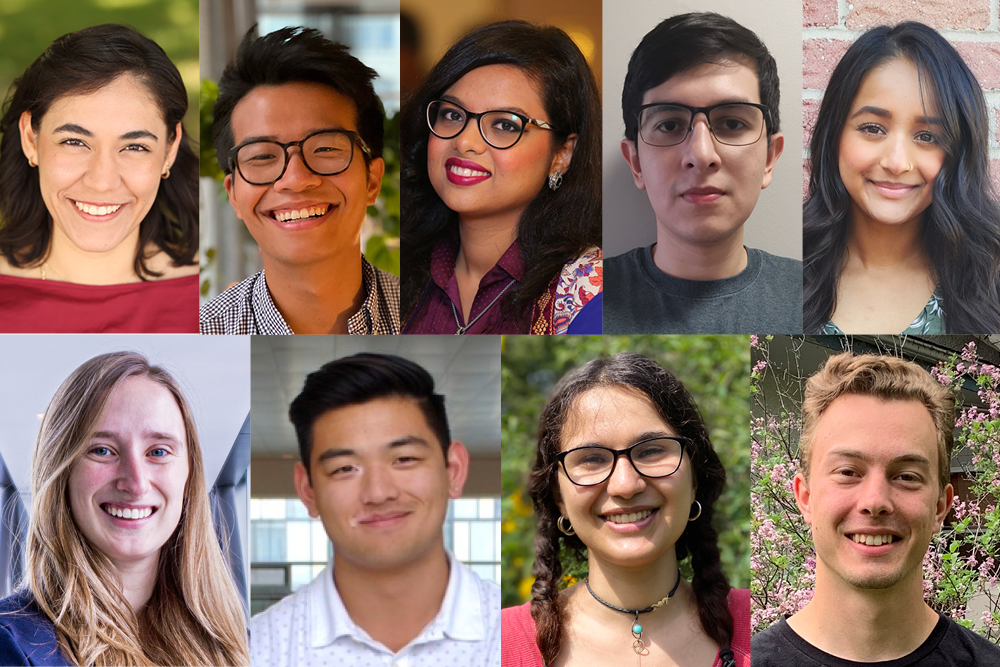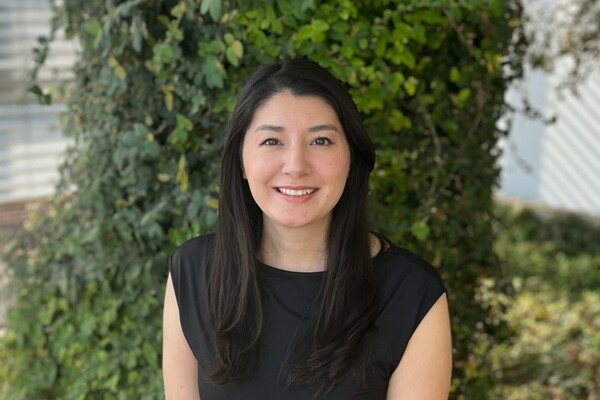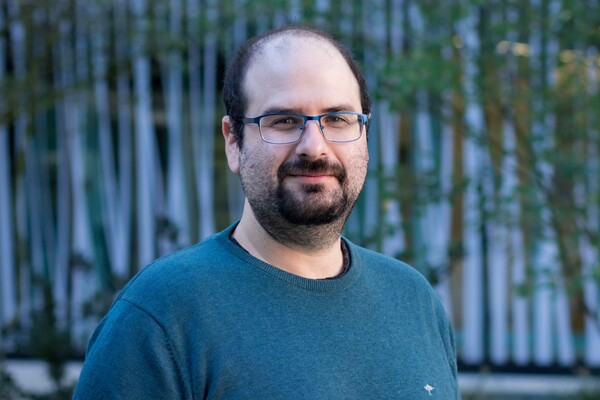Main Second Level Navigation
2021 Yip Awards Recognize Early Graduate Research in Biology and Disease

When at the start of the pandemic life ground to a halt, Adrian Granda Farias was busier than ever.
The lab he had joined for a PhD a few months before pivoted to COVID-19 research amid a sense of urgency posed by the emerging global threat. Working alongside immunologists, genome scientists, computational biologists and other experts, Granda Farias searched for the factors in human cells that are essential for Sars-CoV2 replication and that could be exploited for the development of antivirals.
The pandemic training prepared him well for his main PhD project where he is applying similar methodology to find the genes allowing cancer cells to evade the immune system as potential targets for cancer immunotherapy. His PhD advisor is Jason Moffat, a professor of molecular genetics in the Donnelly Centre for Cellular and Biomolecular Research.
Now Granda Farias is one of nine students who are being recognized by a Cecil Yip Doctoral Research Award. The annual award celebrates first year graduate students in the Donnelly Centre who engage in interdisciplinary research to advance discovery, medicine and health. The award was established in 2015 by the family of late Professor Cecil Yip, former Vice-Dean of Research at the Faculty of Medicine and co-founder of the Centre as a global hub for discovery in biology.
Despite the complex challenges of the pandemic year, the awardees have made huge strides in their projects and I wish them all the best as they continue along their journeys – so many inspiring and exciting research projects underway in the Centre.Christopher Yip, Dean of Applied Science & Engineering and Chair of Yip Award committee
The 2021 Yip awardees come from various graduate programs at U of T: molecular genetics (Mogen), biomedical engineering (BME) and chemical engineering and applied chemistry (ChemE). Their projects range from deepening our knowledge of how the genome works to tissue engineering and computational biology.
“I would like to offer my heartfelt congratulations to all the awardees of this well-deserved recognition”, says Christopher Yip, Dean of the Faculty of Engineering & Applied Science, Principal Investigator at the Centre and the chair of the award committee. “Despite the complex challenges of the pandemic year, they have made huge strides in their projects and I wish them all the best as they continue along their journeys – so many inspiring and exciting research projects underway in the Centre.”
Donnelly Centre investigators, Jason Moffat, Penney Gilbert and Igor Stagljar, served as award committee members to elect the recipients. During the assessment of the candidates from their labs, Moffat and Gilbert recused themselves from voting to avoid conflict of interest.
Awarded projects:
Two Yip awardees, Shamira Tabrejee and Sara Pour, in Professor Tim Hughes’ group, are working to shed light on how the cellular machinery interprets the information in the genome to regulate gene expression at the right time and place. Since misregulated gene expression is behind many diseases, their projects hold promise for predicting disease risk from genome sequence and developing new therapeutics. Tabrejee (Mogen) is studying how chromatin architecture affects gene expression. Chromatin is how DNA is found inside the cells, wrapped around proteins called nucleosomes which help keep genes turned off. In collaboration with Jack Greenblatt, a professor of molecular genetics at the Centre and a renowned expert in chromatin biology, Tabrejee is studying whether chromatin remodelling enzymes, which bind the nucleosomes, influence where they are positioned in the genome and whether this information can be used to predict gene expression.
Meanwhile, Pour (Mogen) is on the hunt for the genes’ ends which remain elusive to this day. When a gene is switched on, it is transcribed into an RNA transcript molecule whose tail end is adorned with distinct molecular tags. Pour is developing deep learning computational tools to generate a better prediction of where individual genes terminate by including larger swathes of DNA sequences into analysis.
Once transcribed, an RNA message gets processed into a template for the synthesis of the encoded protein molecule. Steven Dupas (Mogen) in Professor Ben Blencowe’s lab is studying the process known as alternative splicing during which protein non-coding segments, known as introns, are removed from a nascent transcript while the coding exons are variably retained. In this way splicing allows protein diversification at the molecular level with miscues linked to various disorders. Dupas is collaborating with the Moffat lab to apply the CRISPR gene editing technology to systematically investigate how microexons, tiny exons mostly found in the brain, contribute to healthy development and neurological disorders.
As a student in the Computational Biology Molecular Genetics PhD program at Mogen, Brandon Lieng is applying his computational background to developing software tools for the discovery of novel metabolites, small molecules produced during metabolic reactions in cells, from mass spectrometry data. A lack of such tools has prevented a systematic study of metabolites despite their important roles in health and disease. Co-supervised by Rafael Montenegro-Burke and Hannes Röst, both professors of molecular genetics and computer science, Lieng is collaborating with Professors Brenda Andrews and Charlie Boone, professors of molecular genetics at the Centre, to first identify new metabolites in yeast cells, which is the best described cell type at the molecular level, before moving on to more complex cells like human.
In Professor Penney Gilbert’s lab, two Yip awardees, Heta Lad and Carolina Chavez Madero, are studying the forces behind skeletal muscle wasting and repair, respectively. Working with Dr. Jane Batt at St Michael’s Hospital in Toronto, Lad (BME) is on the quest to determine whether circulating factors in the blood contribute to muscle weakness in patients in the intensive care unit (ICU). Collaborating with Professors Montenegro-Burke and Gary Bader, also at the Centre, she will investigate ICU patient sera, and their ability to induce weakness in human muscles in the dish, grown using a miniaturised platform previously developed by the lab. Chavez Madero (BME) is applying the same “micro-muscles” platform to study how human skeletal muscle repairs itself in real time. Using optogenetics, where light is applied to switch molecular processes on and off, she is investigating how different molecular factors in muscle stem cells contribute to muscle renewal for regenerative medicine.
Tissue repair is also the focus of Yip awardees Mickael Dang and Arianna Skirzynska’s projects in Professor Molly Shoichet’s bioengineering lab. Dang (ChemE) is tackling eye damage caused by microbial infection of the cornea, which often leads to blindness, in collaboration with Professor Gerry Fuller at Stanford University. To improve on the existing treatment of frequent eye drops, Dang is combining polymer chemistry, pharmacology and mechanical engineering to create a new gel-like biomaterial which can be infused with the antimicrobial drug and implanted into the retina for longer-lasting therapeutic effects. Skirzynska (ChemE) meanwhile is developing a tumour-mimetic hydrogel which will be integrated into a digital microfluidics brain-on-a-chip platform to replicate the invasive behaviour of glioblastoma, the most aggressive type of brain cancer. The miniaturised platform will then be used to screen for drug compounds capable of limiting the invasion and tumourigenicity of glioblastoma cancer stem cells from patient-derived samples to prevent disease recurrence. She is collaborating with Professor Aaron Wheeler’s microfluidics group at the Centre, and glioblastoma expert Dr. Peter Dirks at the Hospital for Sick Children in Toronto.
Follow us on LinkedIn and Twitter to keep up with Donnelly Centre news.
News



